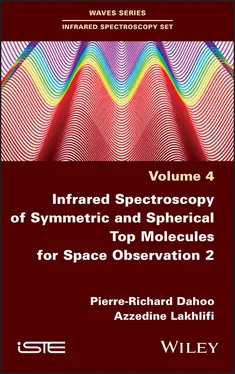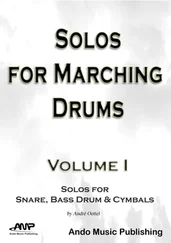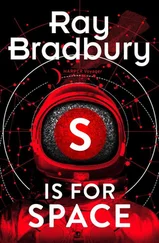89 80
90 81
91 82
92 83
93 84
94 85
95 86
96 87
97 88
98 89
99 90
100 91
101 92
102 93
103 94
104 95
105 96
106 97
107 98
108 99
109 100
110 101
111 102
112 103
113 104
114 105
115 106
116 107
117 108
118 109
119 110
120 111
121 112
122 113
123 114
124 115
125 116
126 117
127 118
128 119
129 120
130 121
131 122
132 123
133 124
134 125
135 126
136 127
137 128
138 129
139 130
140 131
141 132
142 133
143 134
144 135
145 136
146 137
147 138
148 139
149 140
150 141
151 142
152 143
153 144
154 145
155 146
156 147
157 148
158 149
159 150
160 151
161 152
162 153
163 154
164 155
165 156
166 157
167 158
168 159
169 160
170 161
171 162
172 163
173 164
174 165
175 166
176 167
177 169
178 170
179 171
180 172
181 173
182 174
183 175
184 176
185 177
186 178
187 179
188 180
189 181
190 182
191 183
192 184
193 185
194 186
195 187
196 188
197 189
198 190
199 191
200 192
201 193
202 194
203 195
204 196
205 197
206 198
207 199
208 200
209 201
210 202
211 203
212 204
213 205
214 206
215 207
216 208
217 209
218 210
219 211
220 212
221 213
222 214
223 215
224 216
225 217
226 218
227 219
228 220
229 221
230 222
231 223
232 224
233 225
234 226
235 227
236 228
237 229
238 230
239 231
240 232
241 233
242 234
243 235
244 236
245 237
246 238
247 239
248 240
249 241
250 242
251 243
252 244
253 245
254 246
255 247
256 248
257 249
258 250
259 251
260 252
261 253
262 254
263 255
264 256
265 257
266 258
267 259
268 260
269 261
270 262
271 263
272 264
273 265
274 266
275 267
276 268
277 269
278 270
279 271
280 272
281 273
282 274
283 275
284 276
285 277
286 278
287 279
288 280
289 281
290 282
291 283
292 284
293 285
294 286
295 287
296 288
297 289
298 290
299 291
300 293
301 294
302 295
303 296
304 297
305 298
306 299
307 300
308 301
309 302
310 303
Infrared Spectroscopy Set
coordinated by
Pierre Richard Dahoo and Azzedine Lakhlifi
Volume 4
Infrared Spectroscopy of Symmetric and Spherical Top Molecules for Space Observation 2
Pierre Richard Dahoo
Azzedine Lakhlifi

First published 2021 in Great Britain and the United States by ISTE Ltd and John Wiley & Sons, Inc.
Apart from any fair dealing for the purposes of research or private study, or criticism or review, as permitted under the Copyright, Designs and Patents Act 1988, this publication may only be reproduced, stored or transmitted, in any form or by any means, with the prior permission in writing of the publishers, or in the case of reprographic reproduction in accordance with the terms and licenses issued by the CLA. Enquiries concerning reproduction outside these terms should be sent to the publishers at the undermentioned address:
ISTE Ltd
27-37 St George’s Road
London SW19 4EU
UK
www.iste.co.uk
John Wiley & Sons, Inc.
111 River Street
Hoboken, NJ 07030
USA
www.wiley.com
© ISTE Ltd 2021
The rights of Pierre Richard Dahoo and Azzedine Lakhlifi to be identified as the authors of this work have been asserted by them in accordance with the Copyright, Designs and Patents Act 1988.
Library of Congress Control Number: 2021938325
British Library Cataloguing-in-Publication Data
A CIP record for this book is available from the British Library
ISBN 978-1-78630-652-4
Spectroscopy is the high road to physico-chemical measurements of astrophysical objects, such as the interstellar medium, stars or planets and exoplanets. In recent decades, the understanding of the increasingly finer details of the interaction between matter and radiation, as reflected in the spectral range by effects, sometimes unexpected, on the observed spectra, has led to outstanding advances in spectroscopy, from ground- or space-based observations. For this purpose, increasingly sophisticated instruments were developed for space probes, initially inspired by laboratory instruments, in order to cope with the severe constraints of space observation and exploration.
The challenge of laboratory spectroscopy presented in this book, the fourth volume in this series, resides not only in registering increasingly complex spectra, even for the simplest molecules observed at high temperature or excited to high vibrational states, but also in understanding specific molecular mechanisms, such as the spectroscopy of molecules in rare gas matrices, clathrates or physico-chemical mechanisms related to the adsorption on graphite substrates. These mechanisms can be used to extrapolate to the very specific conditions of the interstellar medium, where the very rich chemistry discovered by the observations in the millimetric range in the last 50 years is highly dependent on ion–molecule–substrate mechanisms.
Spatial instrumentation in remote spectroscopy offers the possibility of exploring planets with atmospheres, particularly by means of instruments with medium to high resolution. However, Earth observations should be treated separately, as they have other objectives, particularly operational ones, and a different approach and constraints compared to the various distant exploration missions, even though they involve similar categories of instruments. Fourier transform spectrometers have measured, in particular, the atmospheres of Mars, Venus and giant planets and their satellites, thanks to their performances in combining large spectral extent and (relatively) high resolution. The pioneering missions were Mariner, Venera and Voyager. Grating or prism spectrometers, particularly those using adjustable prisms (AOTF – Acoustic Optic Tunable Filter), have also provided remarkable results on Mars and Venus. After the first observations using variable circular filter spectrophotometry (IKS on Vega probe), comets, with their highly specific atmosphere, were observed with grating spectrometers (VIRTIS on Rosetta), which led to a better understanding of their composition and revealed surprising isotopic ratios.
Substrate spectroscopy issues are connected with planetary studies in order to understand the adsorption chemistry at play in the interstellar medium, as well as in the very high atmosphere of planets: one of the key results of the Cassini mission showed that the complex hydrocarbons observed on Titan were generated not only from the photochemistry of nitrogen or methane atmosphere at the level of high clouds, but also in the ionic chemistry of the very high atmosphere, measured directly using mass spectrometry from the instrument aboard the Cassini during its flight over Titan.
Читать дальше













